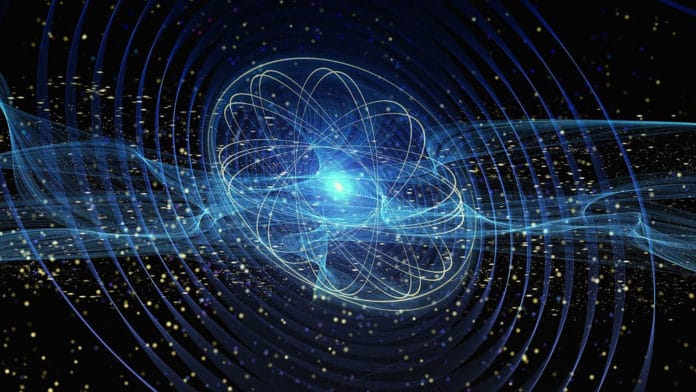A never-before-seen state of matter, first theorized in 1973, has been documented recently by Harvard physicists. This bizarre state of matter, called a quantum spin liquid, is all about magnets that never freeze and electrons in the spin.
In regular magnets, electrons stabilize and form a solid piece of matter with magnetic properties, when a dropped temperature is below a specific temperature. Unlike these regular magnets, the electrons in a quantum spin liquid don’t stabilize when cooled. They continuously change and fluctuate in the most entangled quantum states ever conceived.
The problem with this state of matter has been its very existence. But now, a team of Harvard-led physicists documented the presence of this never-before-seen state of matter- quantum spin liquids. This breakthrough gives scientists the ability to produce this elusive state on demand and gain a novel understanding of its mysterious nature.
Mikhail Lukin, the George Vasmer Leverett Professor of Physics, co-director of the Harvard Quantum Initiative (HQI), said, “It is a very special moment in the field. You can touch, poke, and prod at this exotic state and manipulate it to understand its properties. It’s a new phase of matter that people have never been able to observe.”
The quantum spin liquid has some interesting properties. These properties have promising applications that can advance quantum technologies such as high-temperature superconductors and quantum computers. More specifically, the exotic properties from it could potentially create topological qubits. These topological qubits are resistant to noise and EMIs.
Giulia Semeghini, a postdoctoral fellow in the Harvard-Max Planck Quantum Optics Center, said, “That is a dream in quantum computation. Learning how to create and use such topological qubits would represent a major step toward the realization of reliable quantum computers.”
For this study, the team used the programmable quantum simulator to discern this liquid-like state of matter. Using the simulator, scientists sought to reproduce the same microscopic physics found in condensed matter systems, especially with the freedom that the system’s programmability allows.
Scientists used the simulator to create their frustrated lattice pattern, placing the atoms there to interact and entangle. They then estimated and analyzed the strings that connected the atoms after entangling the whole structure.
Based on the presence and analysis of topological strings, scientists noticed the quantum correlations and that the quantum spin liquid state of matter had emerged.
Study co-author Subir Sachdev, the Herchel Smith Professor of Physics and current Maureen and John Hendricks Distinguished Visiting Professor at the Institute for Advanced Study, said, “You can move the atoms apart as far as you want, you can change the frequency of the laser light, you can change the parameters of nature in a way that you couldn’t in the material where these things are studied earlier. Here, you can look at each atom and see what it’s doing.”
Quantum spin liquids don’t show any magnetic order due to additional third spin. This spin turns the checker box pattern into a triangular pattern. While a pair can always stabilize in one direction or another, the third spin will always be the odd electron out in a triangle. This makes for a “frustrated” magnet where the electron spins can’t stabilize in a single direction.
Something said, “Essentially, they’re in different configurations at the same time with a certain probability. This is the basis for quantum superposition.”
Ruben Verresen, an HQI postdoctoral fellow, said, “The back-and-forth between theory and experiment is extremely stimulating. It was a beautiful moment when the snapshot of the atoms was taken, and the anticipated dimer configuration stared us in the face. It is safe to say that we did not expect our proposal to be realized in a matter of months.”
According to scientists, the possible application of this state of matter to creating robust qubits. They performed a proof-of-concept test that showed it might one day be possible to create these quantum bits by putting the quantum spin liquids in an amazing geometrical array using the simulator.
Scientists are planning to use their quantum simulator to continue investigating quantum spin liquids and how they can create more robust qubits. The study is the first step in creating a topological qubit. However, more study is needed to demonstrate how you can encode it and manipulate it.
Journal Reference:
- G. Semeghini et al. Probing topological spin liquids on a programmable quantum simulator. DOI: 10.1126/science.abi8794
